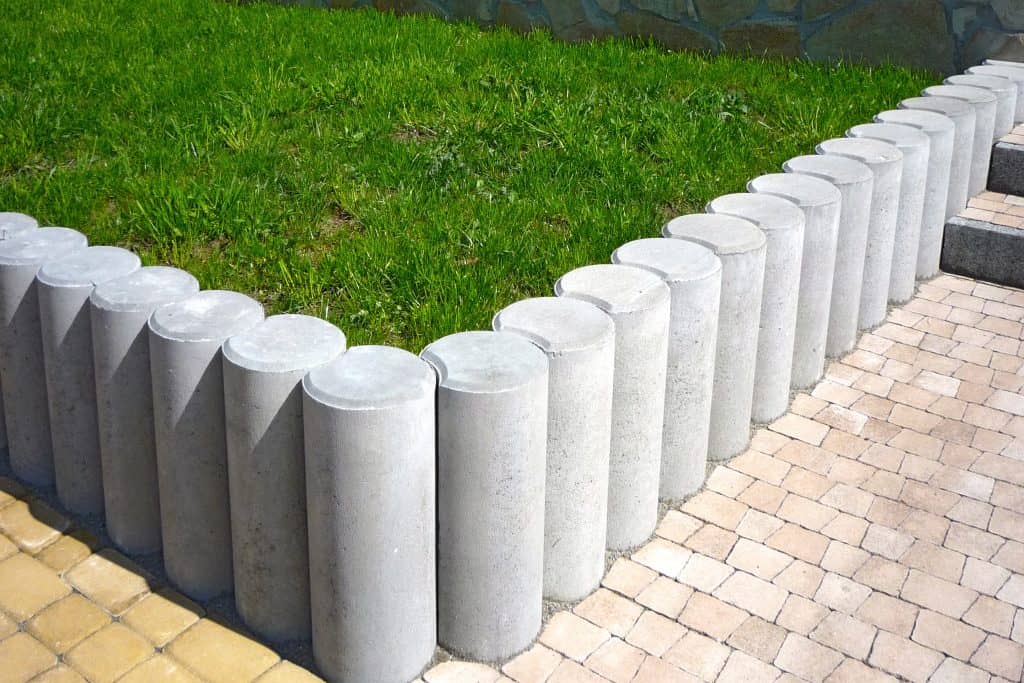There’s no doubt that landscape edging can be a great finishing touch. Depending on the material, it can tie your whole work together. Apart from that, landscape edging is an aesthetically-pleasing way to reduce wood and grass intruding on the flowerbed.
But it can be a delicate process. If you make one small mistake in your measurements, you can throw off your whole work. Nevertheless, today we’re going to teach you how to measure for landscape edging. Continue reading to find out more.
What You’ll Need
- Tape measure
- Twine
- Scissors
- Pen
- Paper
- Calculator
- Edging material (plastic, bricks, railroad ties)

Landscape Edging Calculator using Twine
This method is simple and easy enough. Using twine and tape measure, you’ll be able to get an accurate measurement to calculate your landscape edging. It’ll give you a good idea of how many individual pieces of edging you need.
1. Calculate the Landscape Measurement
- Using measuring tape, begin by measuring the outline of your landscape. Mark down the number you get.
- Get a length of twine. Make sure it’s very long. You want to wrap it around the outline of your landscape.
- If you’re not working with a circular landscape, then you should set stakes in the corners. The stakes will act as guides when you’re measuring.
- When the two ends of your twine meet, cut it using a scissor. Then, measure the length of the twine with a measuring tape.
2. Measure Your Edging Material
What kind of material are you using for your landscape edging? This material could range from individual stones to railroad ties.
- Whatever the material is, you should get one piece of it.
- Next, measure it. Like you previously did in step one, mark down the measurements on a piece of paper.
- Next, you need to add about 4 feet to your original twine measurement.
Mistakes in measurements are common. It’s easy to miscalculate the length of this curve or that turn; it’s even easier to make a mistake while cutting the twine.
3. Divide Length By Piece
Next, divide the perimeter of the entire landscape by the length of one single edging piece. This piece could be a stone or a plastic bit.

The figure you’ll get is the number of individual pieces of edging material you need.
If you’re working with rocks, then you should look at the bags of landscaping rocks. They usually include information on the area they cover.
Landscape Edging Calculator using Yard Shape
This is another way of quickly measuring your landscape edging. If you don’t have twine or something similar, then you could use this method. It depends on the shape of your landscape.
Rectangular
Is your landscape rectangular? Measuring the edging involves no complex math. The formula is simple: P = 2 (l + w)
- Begin with measuring the length of your landscape. Mark down your figure.
- Then, continue by measuring the width.
- Multiply the width by two.
- Follow up by multiplying the length by two.
- Add the multiplied length and width.
The figure you get is the measurement of your landscape edging.
Square
Once again, pull out your measurement tape. If you have a uniform square, then you only need to measure one side of your landscape. However, if you don’t, then you should measure each side.
- If you have a uniformly square landscape, then multiply the length of one side by 4. The number you get is your landscape edging’s measure.
- If you don’t have a uniformly square landscape, then add up the length of the four sides. The number you get is the measurement of your landscape edging.
Circular

But what if you have a circular landscape? It’s simple. Using your measuring tape, measure the diameter of your landscape. The diameter is the distance in the middle across your circle.
Determining where to measure the diameter can be hard. If you’re unsure, you can take multiple measurements. Use your best visual guess.
- Study the measurements. The longest one you find is the diameter of the circle.
- Then, divide the diameter by 2. The number you get is the radius. If your diameter is 50 feet wide, then your radius is 25 feet wide.
- Multiply the radius by 2 and 3.14. If you haven’t been using a calculator for previous calculations, it’s time to use one.
Conclusion
Now that you know how to measure for landscape edging, the task might seem a bit less tedious. All you need is some measuring tape and a little math.
It doesn’t matter what method you use. With the right calculations and measurements, it’ll take no major effort. Good luck!